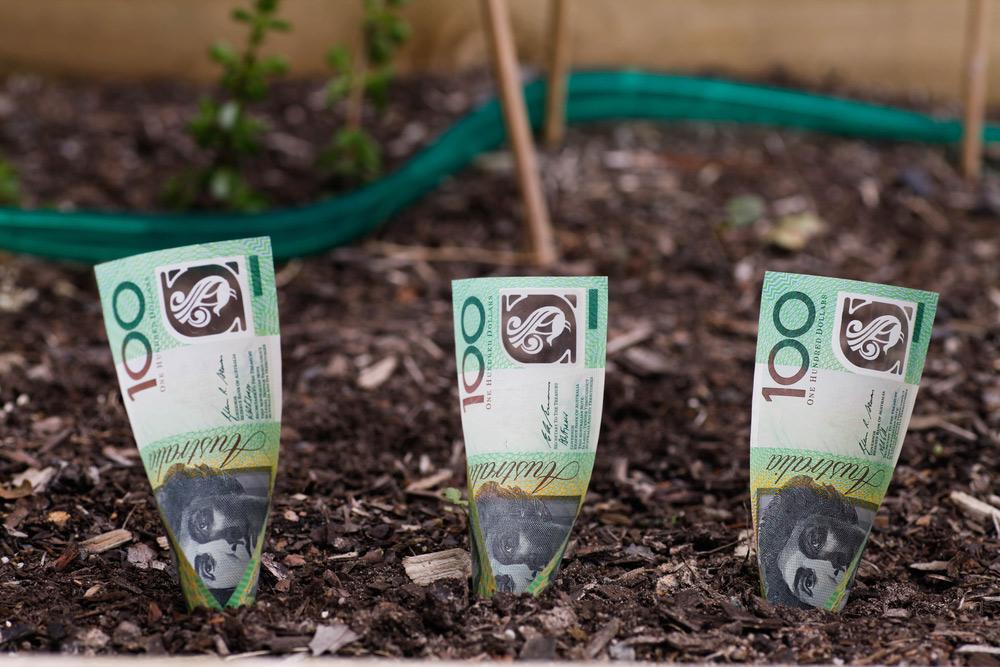
Tips For Buying An Investment Property
Have you decided to take the property investment journey but are feeling clueless as to how to actually board the train? We’re going to give you our top five tips for buying an investment property in 2022 to help point you in the right direction!
But first…
WHAT TO LOOK FOR WHEN BUYING AN INVESTMENT PROPERTY
We know there are a few different market drivers that impact investment properties, such as economics, supply and demand, and rental yields – but the one we want to focus on today that is particularly influential is infrastructure growth.
Investment in infrastructure stands out because it reveals where money is spent, where jobs are getting created and of course where property values will likely increase.
If you’re trying to determine if the property you have your eye on will be a success, ask yourself these four questions:
1. What is the current investing climate?
What does the market look like? Are local investors buying in the area and how long is it taking for properties to sell?
2. Are incomes increasing?
Look for the percentages of individuals who are in high paying growth industries such as medical or tech – then look at property prices.
Can their salaries support the rents as they are now? Could they afford them after any increases?
3. Could a ripple effect take place?
Are nearby suburbs undergoing change that is influencing – or soon will be influencing – the suburb you’re looking at?
4. What kind of demographic lives in the area?
Age, profession, marital status…all of these demographic factors play a part in what type of properties will do well in a certain area.
Once you know what the demographic is, you can figure out what it is they want such as good schools, or good public transport.
WHERE TO BUY PROPERTY IN AUSTRALIA
Right, so we’ve already alluded to the significance location has on your success when buying an investment property.
The importance of location is simple – you can do what you want with your real estate, but you can never change the area it’s in. That’s why we need to be smart about where we invest. Here are three things to consider when looking at markets and locations:
- Go where the wealthy go
Have you heard of the Four X Growth plan? It’s an awesome strategy used by TRC-Gorod CEO Sam Saggers, where you aim to choose assets that will go through four types of growth – deal growth, location growth, market growth and behavioural growth.
Location growth comes about through gentrification. Gentrification is the process of an area’s economics going up as more wealthier people move into the neighbourhood. This stimulates growth as they bring with them new money, subsequently attracting more housing, business and infrastructure.
The idea behind it is that wealthy people live where they want to live and they’re willing to pay more for locations that provide proximity, mobility and liveability. So, if you follow the activity of well-off owner-occupiers, you’ll know which areas are valuable for buying an investment property.
Here’s a great explanation on all six stages of gentrification and how to spot the process happening early.
2. Look at how behaviours may change in the area
Locations that create positive or desirable behaviours are worth their weight in gold.
Planned infrastructure or local projects will tell you exactly how that property may be used differently in the future, whether its new bike paths being put in that connect your real estate to the main shopping centre of that district, or an older apartment building getting a new accessible rooftop space.
Keeping up to date with town planning is a great way to know how councils plan to grow areas and foster certain behaviours.
Also doing your research around a city’s economy and how they’re planning to attract a bigger population is key. Sam shares his thoughts on why Brisbane is one of the best places for buying an investment property right now.
3. Let go of preconceived ideas on location
Too often quality real estate gets overlooked because investors have preconceived notions about those locations.
For instance, people might not bother to look in Sydney anymore because the values have grown tenfold in certain areas – but that doesn’t mean there aren’t any good properties left in Sydney that are within your price range and poised for gentrification.
You also don’t want to get the idea in your head that you should only invest in locations near you or that you’re familiar with personally. That’s what your property strategist and coach is for! They’ll not only help narrow down your search to a handful of potential locations, they’ll also reach out to local agents in those areas to get a better feel of the rental returns and demographic.
FIVE TIPS FOR BUYING AN INVESTMENT PROPERTY
1. Location is everything
Come on, if you’ve got this far you already know this! Even when there’s a lack of good supply, don’t let that push you to buying up in the wrong areas.
A quality location should have strong rent-to-income ratios where typical tenants have the cash to also cover a rental increase.
On top of everything we’ve already mentioned about location, look for neighbourhoods that have more of a live, work, play dynamic. These are areas where everything you need or want (entertainment, food precincts, culture, wellness and natural amenities) can be reached within 20 minutes of your property.
2. You need MULTIPLE strategies to succeed
Buying an investment property is a 15 to 20 year-long commitment, so it’s silly to think that you can make it through without having multiple strategies in place.
That’s right, multiple strategies. Seven in fact! You’re going to need:
- A finance strategy – how will you maximise your buying power and improve your serviceability as you go on?
- A growth strategy – the foundation of your property portfolio will likely rely on capital growth to keep acquiring assets
- A property management strategy – how will you manage and maintain your investments?
- A debt reduction strategy – once you’ve acquired as many properties as you set out for, how will you now start paying down those debts?
- A tax minimisation strategy – ensuring you’re paying the least amount of tax as possible on your assets
- A financial strategy – not to be confused with a finance strategy, how will your acquired wealth be managed through retirement?
- An acceleration strategy – how will you use any equity you haven’t tapped to accelerate your wealth?
Of course, it’s not expected that you’ll come up with these all on your own. Strategising is where you need your six star team to step in and help – starting with an awesome property coach or mentor.
3. Think about the quality of your tenant
Finding the best tenants has always been a concern when buying an investment property, even more so since the pandemic made it very clear just how many renters are one paycheck away from being broke.
An ideal tenant should have enough cash to their name that they won’t need rent relief if a major interference happens. This isn’t to say they all need to be in jobs that pay over $80,000 a year, just that they have enough extra cash flow to take on increases with ease.
Considering the lack of wage growth across Australia, this means having your property manager do a little more due diligence to ensure the tenants they choose are reliable, skilled and working within in-demand industries.
4. Invest in the visual experience
There are too many people out there focusing only on analysing markets and crunching the numbers when it comes to buying an investment property.
But guess who doesn’t give two hoots about the data? Renters and home-buyers! What they do care about is the feel and the visual experience a home provides.
There are three design traits that your property needs in order to appeal to the top tier demographics:
- Functional design: Think effortless floor plans that maximise space and emphasise the flow of liveability.
- Reflective design: The cosmetic side of real estate – think nice hardwood flooring, feature panelled cabinetry, exposed stone or brick, high end fittings and fixtures, and a spacious kitchen with a feature splashback.
- Behavioural design: A feature that will change a behaviour in someone’s life – think an outdoor breakfast bar or a pool.
For a much better deep dive into each design aspect have a read of this blog: The psychology of what makes a home desirable.
5. Get rid of any bad debt first
Bad debt is not something you want to have hanging around your neck when it comes time to borrow money.
If you currently have credit cards, personal loans, car loans, or any other kind of consumer debt to your name then you’re not helping your financial standing with lenders.
Remember this includes your own home – your Personal Place of Residence – which offers no tax benefits unlike buying an investment property which we consider to be good debt.
To improve your borrowing power, focus on paying down as much bad debt as you can so that you free up that cash flow for more properties. If it’s your own home standing in the way, then it may be worth considering moving out and renting somewhere cheaper for a while.
THE BEST ADVICE YOU’LL EVER GET…
It’s all well and good for us to share our tried and tested tips for buying an investment property, but without the right guidance to implement them you might find yourself just as stuck as you were before!
The truth is you won’t succeed as a property investor unless you have the right team around you. We run free real estate investing seminars designed to help you build strong foundations for your property portfolio – including how to choose the best people to help you.
Learn where the best markets are to start your investing journey and begin creating the financially free life you’ve always dreamed of.
Recent Articles
An Investor’s Guide to Multi-Income Properties
When it comes to building a booming property portfolio, diversity is key! There are four primary multi-income types that Australian investors can buy at the moment.
Property Cash Flow Basics For Creating Passive Income
Buying real estate is similar to running a business – good performance is derived from your ability to generate cash flow. For a property investor, this means eventually living off the passive income that your real estate generates. Therefore, it is especially important that you map out your ability to build a portfolio that will deliberately achieve this level of success from the get-go.
How Property Investors Can Reduce Tax Down To Zero!
Those who own real estate are subject to many, different kinds of tax. Some tax is unavoidable. Other kinds of tax are legally, 100% avoidable – or at least able to be reduced substantially. With the Victorian government recently announcing a rise in the land tax threshold it’s even more important that property investors know where they can and should minimise the tax they pay.
A Property Investor’s Guide To Depreciation
Every smart property investor knows that to create and maintain a portfolio, we need to have good cash flow. One of the ways we can support this is by using depreciation and tax. But, just like equity, depreciation only works for us if we know how to access and then leverage it.
A Property Investors Guide To Guaranteed Rental Increases
Rent is your weekly or monthly incomes from your property. And it’s an income you don’t work for. It’s the absolute key to good cash flow and passive income, so it’s essential you are able to keep raising your rents at regular intervals. But, what makes it possible for property investors to do this?
The Only Time You Should Sell An Investment Property
The golden rule of property investing is to buy well and NEVER SELL. However, there are always exceptions to the rule… Firstly, let’s look at why you would keep an investment property? If you buy a great piece of real estate, in the right location, it will always create a passive income for you, so there will be no reason to sell it.
House vs Apartment – Which Is Better for Capital Growth?
Many property investors favour one type of property – either apartments or houses. While there are pros and cons to both, which we will discuss here, one of the often forgotten advantages of houses is the investment you’re making not only in the bricks, but also in the land. Land value in itself increases over time, and investment in a piece of land also provides opportunity to renovate, subdivide and develop, all of which lead to greater capital growth.
Use Equity To Create Cashflow in 4 Simple Steps!
Equity is an interesting topic when it comes to real estate. Smart property investors know that equity can play a key part in creating passive income that accumulates over time, allowing us to eventually work less and ultimately do more of what we love. But in order to be able to use equity to create passive income, there are some important steps property investors need to take right at the beginning of their journey.
Economy Bounce-back Better Than Expected, What Investors Need To Know
Bouncing back much faster – and stronger – than predicted post-COVID, the Reserve Bank of Australia (RBA) is anticipating a good end to 2021, and a great 2022. But with so much uncertainty over the last 12 months, it’s hard to know if this economy is here to stay, and if so, how it will impact property investors in the long-run.












